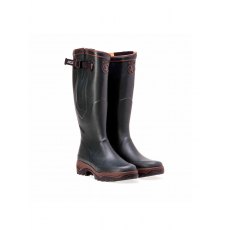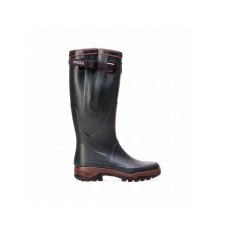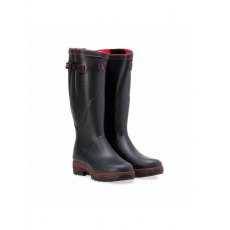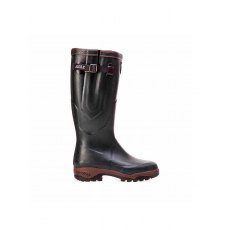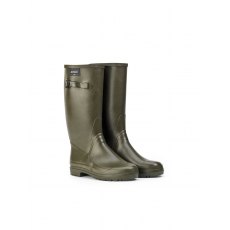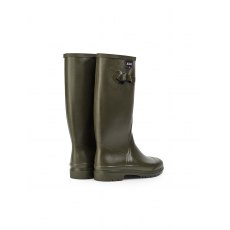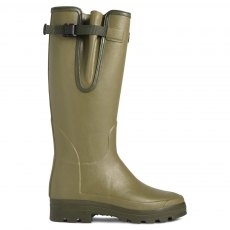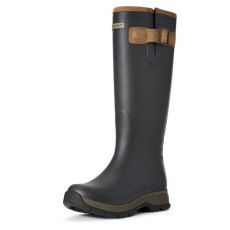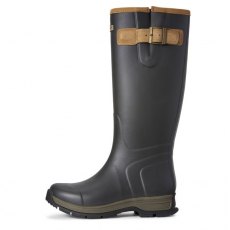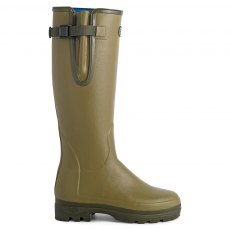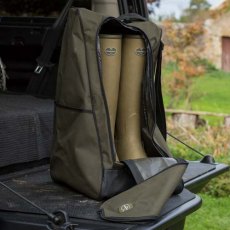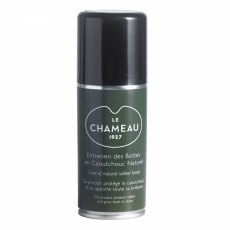How To Choose Your Wellies
Wellington boots are essential for country life and a true staple of the winter wardrobe. When the fields are muddy or the snow has fallen, there is nothing better to have on your feet. They’ll keep your feet clean, warm and dry while you’re busy enjoying the great outdoors. Choosing the perfect pair of wellies will help you make the best of the British weather and our handy guide will help find the right pair for you.
The first thing to think about is how you will be using your wellies. What type of environment will you be wearing them in? What activities will you be undertaking? Whether it’s gardening, riding or just walking the dog, we have a wide range of wellington boots to ensure you get the right fit, comfort and performance.

History
The infamous wellington boot has been a part of our history since the 19th century. In fact, the first pair of rubber boots were made by French footwear and textile company Aigle in 1853. Arthur Wellesley, the Duke of Wellington, was the first public figure to popularise wellies, making them popular with British aristocracy for hunting and shooting.
During the world wars, rubber boots were supplied to soldiers thanks to their resilience to boggy fields and muddy puddles. By 1946, the Wellington boot had become popular among families and these days are worn by boys and girls of all ages.
They’ve had lots of names over the years, including wellingtons, gumboots, galoshes and rain boots, but one thing remains the same: the wellington boot is an essential part of country living and still a firm favourite in the hunting and shooting scene.
Getting the right size and fit
Wellington boot sizes are the same as regular footwear sizes. Wellies usually come to just below the knee, offering excellent protection against splashes of mud and water up the leg. There are also ankle-length wellies available too. Make sure you know your calf size before you buy. The boots should be tight enough to prevent your feet slipping out, but also loose enough to accommodate thick socks, without pinching any part of your legs or feet. If you’re planning to wear several pairs of thick socks for extra warmth in snowy conditions, it may be sensible to get the next size up.
Looking after your wellies
A little care and attention can go a long way to extending the life or your wellies. Rubber is a natural product and will degrade if it is not protected so make sure you don’t leave them stored in direct sunlight or near a radiator. When you wash them, just use water rather than any cleaning liquid, removing any manure, mud or dirt away with a soft-bristled scrubbing brush or an old tooth brush. Wellies should always be air-dried in a well-ventilated area, hung by the heel so that they dry out effectively. Never dry wellies by putting them in direct sunlight as it can damage the rubber and cause the colour to fade.
Accessories
At Unicorn Saddlery, we stock an excellent range of footwear accessories from welly boot bags to footwear cleaner, polish and deodoriser.
With its large front zip opening and top handle, this Le Chameau boot bag will store away your wellies with ease. The ventilation netting will also ensure your boots are protected from dampness.
This Ariat anti-bacterial footwear deodoriser kills all fungal growth helping your shoes remain fresh. Simply spray inside the shoes and allow to dry.
Clean rubber boots effectively with this Le Chameau boot spray. It gently cares for natural rubber, offering protection and helping to prolong the life of your wellies.
Frequently Asked Questions
Here are the answers to some of your most frequently asked questions about wellies.
Are wellies good for walking?
If you take the time to find the right pair and continue to take good care of them, your wellies will be able to cover many miles with you. Look out for wellies that offer good grip on the bottom – this will be very important when walking down slippery hills or edging your way along muddy paths!
Are wellies true to size?
Wellington boot sizes are the same as regular footwear sizes. If you’re planning to wear several pairs of thick socks, you may want to consider the next size up.
Are wellies vegan?
Because they are made of natural rubber or PVC, wellington boots could be classed as vegan. However, the problem is the adhesive used to manufacture the boots isn’t guaranteed to not contain animal products.
Are wellies waterproof?
Yes, wellies are designed to keep feet dry and clean.
Can wellies be recycled?
While you can’t put them out with your old newspapers and cans, wellington boots can be reused and put to good use. Consider donating old or outgrown pairs to your local charity shop. If your old wellies are looking a little worse for wear turn them into welly plant pots and birdhouses!
Are wellies good for snow?
Wellies with a deep rubber tread are good for all types of snow, ice and slush. Wellies weren’t built for warmth so make sure you have a good liner or some thick pairs of socks to keep your feet warm.
Can wellies go in the washing machine?
Do not put wellies in the washing machine as it may damage the rubber.
Can wellies go in the tumble dryer?
Do not put wellies in the tumble dryer as it may damage the rubber. They should always be air-dried, hung upside-down to dry effectively.
Can wellies be stretched?
The art of stretching boots only really applies to leather boots. Leather can be coaxed to ‘give’ a little and will stay stretched. Wellies may stretch when your foot is in them but, like a rubber band, they will return to their original size when you remove your foot.
How should wellies fit?
Your wellies should be tight enough that they don’t slip off but loose enough to accommodate thick socks without pinching any part of your legs or feet.
What wellies do the royals wear?
Kate Middleton often wears her Le Chameau wellies during public engagements on behalf of the Royal Family. Prince Harry was also spotted out and about in his durable pair of Le Chameau wellies in 2017 when he joined the young members of Myplace at Brockholes Nature Reserve.
When were rubber wellies invented?
Rubber boots were invented by French footwear and textile company Aigle in 1853.
Why are wellies called gumboots?
In Australia, wellington boots are called "gumboots. It is believed to have come about because the boots are made from the rubber tree "gum" or sap.
Why store wellies upside down?
Hang your boots upside down to help them air and stay dry, as well as preventing easy access for creepy crawlies!
Why neoprene wellies?
Neoprene is a synthetic form of rubber. It is resistant to extreme conditions and more durable than natural rubber. It is waterproof, flexible and provides superb insulation.




